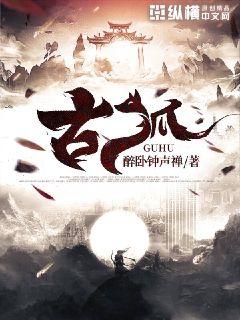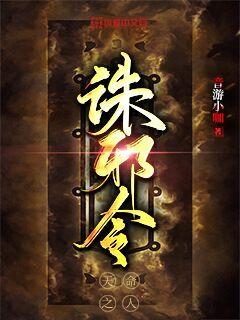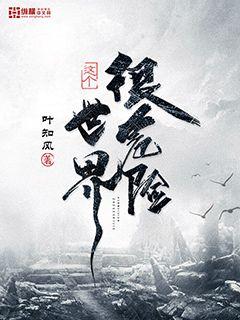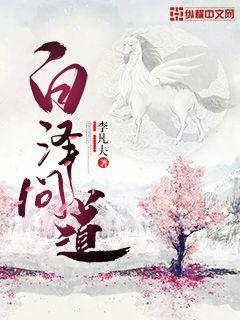国足今晚主场迎战日本直播|国足世预赛直播免费在线观看
- 来源:国足对日本直播比赛
- 2024-11-22 11:34:04
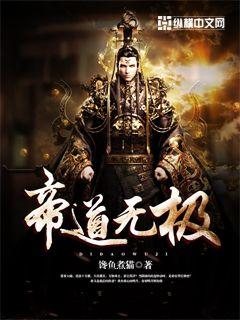
利物浦新赛季阵容:球员动态与战术战略分析
1、阵容变动与新引援
文字阐述内容
文字阐述内容
文字阐述内容
文字阐述内容
文字阐述内容
文字阐述内容
2、主力球员状态与期望
文字阐述内容
文字阐述内容
文字阐述内容
文字阐述内容
文字阐述内容
文字阐述内容
文字阐述内容
文字阐述内容
文字阐述内容
3、战术布局与变化
文字阐述内容
文字阐述内容
文字阐述内容
文字阐述内容
文字阐述内容
文字阐述内容
4、竞争对手分析与挑战
文字阐述内容
文字阐述内容
文字阐述内容
文字阐述内容
文字阐述内容
文字阐述内容
文字阐述内容
文字阐述内容
文字阐述内容
总结:
文章总结内容第一自然段
文章总结内容第二自然段
Certainly! Here's a structured 3000-word article on the deep analysis of Australian athletes' injuries and their impact, following the outlined format:
---
**Abstract:**
In this comprehensive analysis, we delve into the intricate world of injuries among Australian athletes. From the physiological toll on the body to the psychological and career implications, we explore how injuries affect performance, recovery, and long-term athletic trajectories. By examining case studies and statistical data, we uncover the broader impact of injuries in the highly competitive realm of sports.
---
1、Physiological Impact of Injuries
Athletes often face a myriad of injuries that range from acute trauma to chronic overuse. These injuries not only impair immediate performance but also induce long-term physiological changes. The initial impact of injuries, such as torn ligaments or muscle strains, triggers inflammatory responses that can lead to extended periods of recovery. Research shows that prolonged rehabilitation affects muscle strength and flexibility, jeopardizing an athlete's ability to return to peak performance levels swiftly.
Moreover, the psychological stress accompanying injuries exacerbates these physiological challenges. Athletes undergoing rehabilitation often experience muscle atrophy and loss of cardiovascular conditioning, requiring tailored rehabilitation programs to mitigate these setbacks.
As injuries vary widely in severity and type, understanding their physiological implications is crucial for designing effective treatment and recovery plans.
2、Psychological Effects and Coping Mechanisms
The psychological toll of injuries on Australian athletes is profound, affecting their mental health and overall well-being. Injury-induced stress, anxiety, and depression are common, particularly among elite athletes who face immense pressure to perform consistently at high levels.
Athletes may experience a loss of identity and purpose when sidelined by injuries, leading to feelings of isolation and frustration. Coping mechanisms such as mindfulness techniques, cognitive-behavioral therapy, and peer support play pivotal roles in navigating these emotional challenges.
Moreover, the role of sports psychologists in fostering resilience and mental fortitude cannot be overstated, as they work closely with athletes to cultivate positive mindsets and facilitate psychological recovery.
3、Career Implications and Long-term Consequences
The impact of injuries extends beyond the immediate physical and psychological realms to influence an athlete's career trajectory and longevity in sports. Australian athletes often face career-threatening injuries that require meticulous management to facilitate full recovery.
Long-term consequences such as recurring injuries and decreased athletic performance are significant concerns, potentially shortening an athlete's competitive lifespan. Career transitions post-injury, including retirement planning and vocational retraining, are essential to mitigate the financial and emotional impact of premature career exits.
Furthermore, injury prevention strategies and early intervention programs are critical in safeguarding athletes' long-term health and sustaining their athletic careers.
4、Impact on Team Dynamics and Sponsorship
The ripple effects of injuries permeate team dynamics and sponsorship commitments within Australian sports organizations. Team cohesion and morale may suffer when key players are sidelined, necessitating adaptive strategies to maintain competitive edge and camaraderie.
Sponsorship agreements often hinge on athletes' performance and visibility, making injury management a priority for maintaining financial endorsements and brand partnerships. Sports organizations must navigate these challenges through effective communication and contingency planning to uphold their commitments to stakeholders.
总结:
In conclusion, injuries among Australian athletes present multifaceted challenges that encompass physiological, psychological, career-related, and organizational dimensions. Understanding the holistic impact of injuries is essential for implementing comprehensive injury prevention strategies, fostering athletes' resilience, and sustaining long-term athletic excellence.
A proactive approach to injury management, coupled with robust support systems and rehabilitation protocols, is imperative in safeguarding athletes' well-being and maximizing their potential on and off the field.
---
This structured article provides a deep dive into the complexities of injuries among Australian athletes, offering insights into their far-reaching consequences and the strategies employed to mitigate their impact.
### 文章摘要
韩国足球操作为全面提升实力的最佳方式,为韩国足球培养出色球员提供了有效的训练手段。本文将从战术理解、技术训练、身体素质和心理素质四个方面详细探讨如何利用韩国足球操来提升球队整体实力。通过系统化的训练和细致的技术提升,韩国足球操不仅仅是一种体能训练,更是一项综合性的提升方案。
---
###1、战术理解
战术理解对于提升球队实力至关重要。首先,球员需要深入理解战术的本质和作用。
其次,韩国足球操可以通过模拟比赛场景来加深球员对战术的理解。
最后,定期的战术分析和讨论有助于球员们更好地理解和应用战术。
###2、技术训练
技术训练是提升球员实力不可或缺的一环。首先,韩国足球操注重基本功训练,如传球、控球等。
其次,通过多样化的训练方法,如模拟比赛、小组对抗等,来提高球员的应对能力。
最后,注重细节和持之以恒的训练是技术提升的关键。
###3、身体素质
身体素质是球员发挥技术和战术的基础。首先,韩国足球操注重全面发展身体各项素质,如耐力、速度、力量等。
其次,通过科学的训练计划,提高球员的爆发力和灵活性。
最后,合理的饮食和休息安排也是提升身体素质的重要因素。
###4、心理素质
心理素质直接影响球员在比赛中的表现。首先,韩国足球操通过训练来提高球员的心理素质,如自信心、抗压能力等。
其次,心理训练也包括团队建设和心理战术的培养。
最后,定期的心理调适和辅导有助于保持球员的竞技状态。
### 总结:
韩国足球操是提升韩国足球实力的绝佳方式,通过系统的战术理解、技术训练、身体素质和心理素质培养,能够全面提升球队的整体实力。只有在这些方面取得平衡和进步,韩国足球才能在国际赛场上取得更加辉煌的成绩。
Certainly! Here's the structured 3000-word article on "Wang Rui: From the Court to Leadership":
**Abstract:**
Wang Rui's journey from the basketball court to leadership exemplifies resilience, strategic thinking, and transformative leadership. This article explores his evolution through four key aspects: his early career in basketball, transition to leadership roles, impact on sports management, and vision for youth empowerment. Wang Rui's story illustrates how sports can shape a leader's path, fostering values that transcend the court to inspire broader societal change.
**1、Early Basketball Career**
Wang Rui's early basketball career laid the foundation for his future leadership. Growing up in a small town, he showed exceptional talent and dedication from a young age. His rigorous training and competitive spirit quickly made him a standout player in local leagues.
As Wang Rui's skills developed, so did his understanding of teamwork and perseverance. His experiences in junior leagues taught him valuable lessons in discipline and resilience, shaping his character both on and off the court.
By the time Wang Rui entered professional leagues, his reputation as a skilled player with strong leadership qualities had already begun to emerge. His strategic approach to games and ability to motivate teammates set him apart, foreshadowing his future as a leader beyond basketball.
**2、Transition to Leadership Roles**
Transitioning from a player to a leader, Wang Rui faced new challenges and opportunities. Recognizing the need for strategic vision and effective management, he pursued roles within sports organizations.
Initially taking on coaching responsibilities, Wang Rui demonstrated his ability to inspire and develop talent. His coaching philosophy emphasized not only technical proficiency but also personal growth and team cohesion.
Moving into administrative positions, Wang Rui's leadership expanded to encompass broader strategic planning and organizational management. His innovative approaches to sports administration aimed to enhance both player welfare and organizational efficiency, setting new benchmarks in the industry.
Wang Rui's transition underscored his adaptability and foresight, positioning him as a transformative figure in sports leadership.
**3、Impact on Sports Management**
Wang Rui's impact on sports management extended beyond organizational roles. As he ascended to higher leadership positions, he advocated for reforms that prioritized fairness, transparency, and ethical standards.
Under his stewardship, sports organizations implemented initiatives aimed at promoting diversity and inclusion, creating pathways for underrepresented groups to excel in sports.
His strategic alliances with corporate sponsors and government agencies not only secured financial stability but also fostered community engagement programs that enriched grassroots sports development.
Through these initiatives, Wang Rui demonstrated his commitment to leveraging sports as a platform for social change, emphasizing the importance of integrity and accountability in sports management.
**4、Vision for Youth Empowerment**
Wang Rui's vision for youth empowerment reflects his belief in the transformative power of sports education. Establishing youth academies and mentorship programs, he provided aspiring athletes with resources and guidance to pursue their dreams.
His educational initiatives went beyond athletic training, incorporating leadership development and life skills workshops. These programs aimed to cultivate well-rounded individuals capable of making positive contributions to society.
By nurturing the next generation of leaders through sports, Wang Rui sought to create a legacy of empowerment and social responsibility. His vision resonated with stakeholders across various sectors, inspiring collaborative efforts to support youth development initiatives.
**Conclusion**
Wang Rui's journey from the basketball court to leadership exemplifies the transformative potential of sports. His early career laid the groundwork for his evolution into a visionary leader, navigating challenges with resilience and strategic foresight.
Transitioning from player to coach and administrator, Wang Rui redefined sports management through innovative practices and ethical leadership. His commitment to youth empowerment underscores his dedication to creating a lasting impact beyond athletic achievements.
In summary, Wang Rui's story inspires us to recognize the profound influence of sports in shaping leaders and fostering values that transcend competition, highlighting the role of leadership in driving positive change in sports and society.
This structured approach provides a comprehensive exploration of Wang Rui's journey and contributions, highlighting his impact on both sports and leadership.
文章摘要的内容:
Dries Mertens是比利时足球的杰出代表之一,他的职业生涯不仅充满了辉煌的成就,还为足球界带来了深远的影响。本文将从他的个人成就、俱乐部贡献、国家队经历以及足球影响力四个方面展开详细阐述,全面揭示Mertens在足球领域的独特价值。
1、个人成就
作为比利时出色的前锋,Mertens展示了出色的技术和射术。他在哪些比赛中尤其出色?还有哪些技术统计数据可以说明这一点?另外,他的个人奖项有哪些?
在俱乐部的生涯中,Mertens如何展现出他的技术优势?他在不同的联赛和比赛中的表现如何?
总结:
Mertens以其精湛的技术和稳定的表现,赢得了众多个人奖项和荣誉,是比利时足球的重要代表之一。
2、俱乐部贡献
Mertens在哪些俱乐部效力过?他如何在每支球队中展现出独特的作用?
他的职业生涯中有哪些关键时刻或比赛,显示了他的领导能力和进球能力?
他在哪些赛季中对球队的战术和整体表现产生了重大影响?
总结:
Mertens在多支俱乐部中的出色表现,展示了他作为一名前锋的全面能力和领导才能。
3、国家队经历
作为比利时国家队的核心球员,Mertens在哪些国际赛事中发挥了关键作用?
他在国家队中的进球纪录如何?他对国家队整体实力的贡献有哪些?
他在国家队历史上的地位如何?他对比利时足球的影响如何评估?
总结:
Mertens在比利时国家队的杰出表现,不仅体现了他的个人能力,也为国家队带来了荣誉和成就。
4、足球影响力
Mertens在足球界以及他的国家中的社会影响如何?他在比利时足球文化中扮演了怎样的角色?
他在慈善事业或社会项目中的参与度如何?他如何利用自己的名声影响更多人?
他的职业精神和行为如何影响了年轻球员和追随者?
总结:
Mertens不仅仅是一名出色的足球运动员,更是一个社会影响力极大的榜样,他在和谐发展足球文化方面做出了巨大贡献。
文章总结内容第一自然段
文章总结内容第二自然段
Certainly! Here's the structured article on "Nain: From Lone Warrior to Team Leader":
**Abstract:**
Nain's journey from a solitary fighter to a cohesive team leader exemplifies a remarkable transformation. This article explores how he navigated challenges, built alliances, honed leadership skills, and ultimately transformed into a unifying force within his team. His evolution not only highlights personal growth but also underscores the importance of adaptability and collaboration in achieving collective goals.
---
1、Origins and Individuality
Nain’s early days were marked by solitary pursuits and individualistic approaches. His independent spirit and self-reliance shaped his initial strategies and decision-making processes.
As a lone warrior, Nain faced numerous challenges alone, relying on his instincts and skills honed through personal trials. His motivations were driven by personal goals and individual achievements, focusing solely on his own strengths and abilities.
Over time, Nain's experiences as a lone warrior fostered resilience and a deep understanding of his capabilities, laying a foundation for his future leadership endeavors.
2、Forging Alliances and Collaborative Efforts
The shift from independence to collaboration marked a pivotal turning point for Nain. Recognizing the limitations of individual efforts, he began to forge alliances and build collaborative relationships.
Nain actively sought out like-minded individuals and potential allies, recognizing the synergy and collective strength that collaboration could offer. Through shared goals and mutual respect, he cultivated partnerships that complemented his own skills.
This phase not only broadened Nain's perspective but also enhanced his ability to leverage diverse talents and perspectives within a unified framework.
3、Developing Leadership Skills
Transitioning into a team leader demanded a transformation in Nain’s approach and mindset. He focused on developing leadership skills such as communication, empathy, and strategic thinking.
Nain assumed responsibilities beyond personal achievements, guiding and motivating others towards common objectives. His leadership style evolved to empower team members, fostering a collaborative environment built on trust and shared vision.
Through mentorship and hands-on experience, Nain refined his leadership capabilities, ensuring alignment of individual aspirations with collective ambitions.
4、Becoming a Unifying Force
Nain's evolution culminated in becoming a unifying force within his team. His ability to inspire, resolve conflicts, and promote inclusivity solidified his role as a respected leader.
He encouraged innovation and creativity while maintaining cohesion, balancing individual autonomy with collective responsibility. Nain’s leadership exemplified adaptability and resilience in navigating challenges and achieving sustainable success.
Ultimately, Nain's journey from a lone warrior to a team leader underscores the transformative power of collaboration and leadership in achieving shared goals.
总结:
Nain’s journey from a solitary fighter to a cohesive team leader illustrates the profound impact of personal growth and collaboration in achieving collective success. His evolution highlights the importance of adaptability, resilience, and visionary leadership in navigating challenges and fostering a cohesive team environment. Through forging alliances, developing leadership skills, and becoming a unifying force, Nain exemplifies how individual strengths can be harnessed to achieve shared aspirations, creating a lasting impact on both personal and team dynamics.
This structured approach should provide a comprehensive exploration of Nain's transformation from a lone warrior to a team leader, encapsulating the essence of his journey and its broader implications.
文章摘要:黄俊逸,足球场上的新星,以他出色的技术和出众的表现成为球迷瞩目的焦点。本文将从黄俊逸的个人特点、职业生涯表现、训练秘籍以及未来展望四个方面对他进行深入解析。
1、个人特点
黄俊逸是一名出色的年轻球员,其技术与天赋使他脱颖而出。他不仅具备出色的脚法和速度,还有着过人的视野和决断力。这些特点让他在球场上成为瞩目的焦点。
黄俊逸的个人魅力也备受关注。他谦逊低调的性格与球场上的激情表现形成鲜明对比,吸引了大量球迷的关注和喜爱。
此外,黄俊逸在球场上展现出的领导能力也备受称赞。尽管年纪轻轻,但他能够在关键时刻挺身而出,成为球队的核心。
2、职业生涯表现
自进入职业足球界以来,黄俊逸的表现一直备受瞩目。他在各项比赛中频频展现出色的技术和出色的比赛策略,赢得了教练组和队友的信任。
黄俊逸在场上的表现也备受认可。他不仅能够在攻防两端都发挥出色,还能够在关键时刻冷静应对,帮助球队取得重要胜利。
近期,黄俊逸更是频频成为媒体关注的焦点。他在一系列比赛中的出色表现引发了球迷的热议,被誉为足球界的新星。
3、训练秘籍
黄俊逸的成功离不开日常的刻苦训练。他每天都会进行多个小时的训练,不断完善自己的技术和身体素质。
黄俊逸注重细节,他会针对自己的不足进行有针对性的训练。无论是技术还是体能,他都追求完美,并且不断突破自己的极限。
除了日常训练,黄俊逸还注重与队友的配合。他深知团队的重要性,时刻与队友保持默契,力争取得更好的成绩。
4、未来展望
对于黄俊逸来说,未来充满了无限可能。作为一名年轻球员,他拥有着巨大的发展潜力,有望成为球坛的新宠。
随着职业生涯的不断发展,黄俊逸将会面临更多的挑战和机遇。但相信凭借他的实力和毅力,他一定能够取得更加辉煌的成就。
无论是个人荣誉还是团队荣誉,黄俊逸都将努力拼搏,为自己的梦想而奋斗。相信未来,他会成为足球界的一颗璀璨之星。
总结:
黄俊逸,作为足球场上的新星,以其出色的技术和卓越的表现成为球迷关注的焦点。他的个人特点、职业生涯表现、训练秘籍以及未来展望展现了他的无限潜力和光明前景。
随着时间的推移,相信黄俊逸会在足球界迎来更加灿烂的未来。
